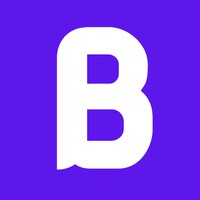Pump & Compressor Considerations for Chemical Process Engineers
Discover what is in the types, hydraulics and operation of pumps and compressors for chemical process engineers

Lectures -59
Resources -2
Duration -3 hours

30-days Money-Back Guarantee
Get your team access to 10000+ top Tutorials Point courses anytime, anywhere.
Course Description
Pumps and Compressors Masterclass," tailored to those fascinated by the intricacies of process engineering. This combined course uniquely focuses on the operation, hydraulics, curves, and process control of pumps and compressors, offering a simplified understanding.
Pumps have been the heart of any plant as they are the main equipment used to guarantee the required process flow or pressure. Pumps are used extensively in oil and gas, chemical, and petrochemical industries to pump different fluid types at various pressures and temperatures.
Without a pump or if there is a problem in the pump operation, this can cause a huge process disturbance, and in some cases, this may lead to process shutdown.
Sizing the pumps and their suction and discharge systems is one of the major carried-out activities by process engineers during process design. This course will not just explain the theory of operation of a pump against the process.
We will see live examples where we shall calculate main pump requirements such as:
Net positive suction head (NPSH)
Differential head
Hydraulic power
This will be through Excel sheets that will be provided in the course to teach you how to calculate these parameters. You shall have access to pump calculation sheets throughout the course.
In this course, we shall also see:
How the pump curve works and how to plot it against the system curve.
How the pump and process system interact with each other and how the pump responds and interacts with process changes or disturbances.
The difference between the pump curve of a centrifugal pump VS a positive displacement pump. We shall also see how each of them interacts with the discharge system differently.
Different control methods to make sure we are on the required pump operating point.
Different pump configurations, how to operate the pumps in series and in parallel, and how this is reflected on pump curves.
Compressors are the main equipment used to transfer gases and raise their pressure. They are used in many different applications. You'll see compressors in the oil and gas industry, whether in midstream or in downstream refineries, in petrochemical plants and in many other chemical processing applications.
Compressors are relatively expensive compared to other pieces of equipment in a process plant. That’s why it is always important to understand their types, how they work, their main issues, and how to overcome them.
This course will try to cover the main compressor principles. We shall see how each of these principles works in the case of both centrifugal and reciprocating compressors.
We shall see how compressing gases which are compressible differs a lot from pumping incompressible liquids.
We shall go through dynamic compressors and their types, then positive displacement compressors and their types. This shall be through comparisons showing the advantages and disadvantages of each type.
In this course, We shall see how the compressor curve works and how to plot it against the system curve for both dynamic and positive displacement types.
We will see how the compressor and the process system interact with each other and how the compressor responds and interacts with process changes or disturbances.
We shall go through compressor surge, its effects, and best practices to avoid it.
We shall see different control methods to make sure we are on the required compressor operating point. This shall also include both centrifugal compressors and reciprocating compressors.
Goals
What will you learn in this course:
Let's discover what we shall learn through this course:
- Main differences between pumps and compressors
- Main compressor types
- How pump curves work and get the operating point against system curve
- Performance curves of both dynamic and positive displacement compressors
- Surge scenario and best practices to avoid it
- Compressor stonewall
- Difference between the operation of a centrifugal pump and positive displacement
- Pump control methods
- Dynamic compressor methods of control
- Reciprocating compressor methods of control
- Operation of pumps in series and in parallel
- When to use more than one stage of a compressor
- Calculate pump available NPSH and make sure that we are avoiding pump cavitation using solved examples
- Estimate pump differential head based on process needs and discharge side resistance using solved examples
- Calculate pump power
Prerequisites
What are the prerequisites for this course?
Basics of engineering and fluid mechanics

Curriculum
Check out the detailed breakdown of what’s inside the course
Introduction
2 Lectures
-
Introduction 03:33 03:33
-
Pumping liquids vs compressing gases 01:41 01:41
Pump and Compressor Types
7 Lectures

Pump NPSH
5 Lectures

Concept of differential pressure / head
5 Lectures

Performance Curves
4 Lectures

Main Compressor Operational Issues
5 Lectures

Dynamic Compressor Control
5 Lectures

Pump Control Methods
4 Lectures

Reciprocating Compressors Control
5 Lectures

Series vs Parallel Configuration
6 Lectures

Pump Calculations
8 Lectures

Pump Horsepower
3 Lectures

Instructor Details

Boostrand Training
eCourse Certificate
Use your certificate to make a career change or to advance in your current career.

Our students work
with the Best


































Related Video Courses
View MoreAnnual Membership
Become a valued member of Tutorials Point and enjoy unlimited access to our vast library of top-rated Video Courses
Subscribe now
Online Certifications
Master prominent technologies at full length and become a valued certified professional.
Explore Now


 Updated on May, 2024
Updated on May, 2024
 Language - English
Language - English